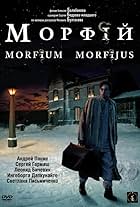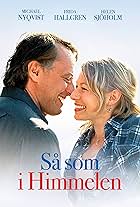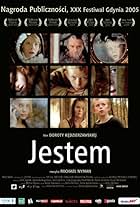przgzr
Joined Feb 2004
Welcome to the new profile
We're still working on updating some profile features. To see the badges, ratings breakdowns, and polls for this profile, please go to the previous version.
Ratings113
przgzr's rating
Reviews116
przgzr's rating
Smaller countries always had problems with film production because their market is small and even cheaper movies can hardly return the invested money. While in USSR politicians decided which movies were allowed to be made and ensured money for all of them - so even totally noncommercial art movies were free to be made without having to think if they would ever come to theaters (except festival ones) as long as enough propaganda movies glorifying war victory and communism have been produced in the same year – authors from other countries had very limited resources. The smaller country, the more problems: movies could be even very successful when analyzing sold tickets compared to total population, but the total amount was still small, and coming from small and unattractive countries these movies had no chance for appearance, let alone success abroad.
In fact, Yugoslavia had certain advantage compared to Iron Courtain. While, as a socialist country, in politically good relations to Eastern Europe, Yugoslavia made several movies in co-production with Czechoslovakia but, unfortunately, without expected results (Czechs gave good equipment and technicians, but none of their legendary authors like Menzel, Forman, Chytilova, ever participated) Yugoslavia also welcomed western movie makers who made films with plot located beyond Iron Curtain and didn't want to or weren't permitted to make them on authentic locations. However, unlike musicians who were big stars there, especially in East Germany and USSR, movies from Yugoslavia were less popular in other socialist countries, partially because they were created for local audience, showing local people talking on local dialects and living the life hardly understandable to people from other cultures.
One of the methods that producers used in Europe (not only on the East and not only in small countries) were tighter bonds between movie companies and television. Many movies have been made as a co-production where movie companies reduced the length of tracks editing them for theatrical release and TV companies used all the footage and made the mini-serials. This is something that probably never happened in overseas countries – in USA sometimes successful movies induces a TV serial but usually with other actors, writers, directors etc (MASH probably being one of the first and best known), and much later serials could become a movie, sometimes with sequels, Star Trek as the best example. This, usually, didn't happen in countries like Yugoslavia.
But usually leaves a place for exceptions. Servantes iz malog mista" is one of there rare ones. It was made a decade after the final second season of Nae malo misto", one of biggest hits in Yugoslavian TV history. Though made entirely by Croatian crew, with plot placed in typical and rather isolated Croatian island and made in local dialect not easy to understand even by viewers from other Croatian regions, this serial made a big success in whole Yugoslavia, and even now, more than 40 years afterwards it is one of two often repeated ones and never lacking audience (the other being Gruntovcani", also set in small Croatian village but in different region with different culture and dialect). Ten years ago the producers understood the possibilities to earn more then just repeatedly broadcasting it. So they made this movie.
If you haven't seen the serial there is almost no sense to watch Servantes. The plot is settled somewhere in the middle of the serial, using even some scenes from it, and almost all the characters are taken from it in the way that the viewer is presumed to know them and their relations - otherwise you most likely won't understand them and won't be able to follow the plot line. There is even no developing of the characters because they have been developing (a very well done job!) during the serial, so as this movie was placed in the middle of it nothing important could have happened to them, otherwise it would collide with the serial. The writers understood these limits and decided to make the movie as a bunch of sketches with a rather loose plot.
It is interesting (and a bit weird) that the title character Servantes (a nickname given to the poor local poet who spent part of his life in Latin America planning to translate Cervantes works to Croatian) isn't the main role neither in serial nor in movie, and the original part of the plot that is related to the nearby located naturist beach doesn't include him at all. During 70's and 80's naturism ("nudism") was a very important part of Croatian tourist offer, but nowadays it's hard to say if it is decreasing or just not spoken about due to modern conservatism. Anyway movie seems to (mis)use a certain Dalmatian tradition: galebi" (seagulls") are young men (and those who think they are still young) who live and prepare whole year for 2-3 summer months when their only task is seducing young (or less young) foreign female tourists and create them the best holidays they ever had. In reality galeb" would never appear on a naturist beach and tourists using naturist beaches most likely wouldn't use their services, however this is comedy and doesn't have to be based on too much reality.
The movie had his audience in the beginning, but it was just because of sentimental reasons. Soon the audience understood that re-watching the serial is much better than watching its pale, weak offspring. Servantes disappeared and has been hard to find ever since (just in rare occasions TV uses it in very far from prime-times). But producers probably managed to get enough money to produce some other, I believe better movies, and that was doubtlessly the only reason Servantes has been resurrected.
In fact, Yugoslavia had certain advantage compared to Iron Courtain. While, as a socialist country, in politically good relations to Eastern Europe, Yugoslavia made several movies in co-production with Czechoslovakia but, unfortunately, without expected results (Czechs gave good equipment and technicians, but none of their legendary authors like Menzel, Forman, Chytilova, ever participated) Yugoslavia also welcomed western movie makers who made films with plot located beyond Iron Curtain and didn't want to or weren't permitted to make them on authentic locations. However, unlike musicians who were big stars there, especially in East Germany and USSR, movies from Yugoslavia were less popular in other socialist countries, partially because they were created for local audience, showing local people talking on local dialects and living the life hardly understandable to people from other cultures.
One of the methods that producers used in Europe (not only on the East and not only in small countries) were tighter bonds between movie companies and television. Many movies have been made as a co-production where movie companies reduced the length of tracks editing them for theatrical release and TV companies used all the footage and made the mini-serials. This is something that probably never happened in overseas countries – in USA sometimes successful movies induces a TV serial but usually with other actors, writers, directors etc (MASH probably being one of the first and best known), and much later serials could become a movie, sometimes with sequels, Star Trek as the best example. This, usually, didn't happen in countries like Yugoslavia.
But usually leaves a place for exceptions. Servantes iz malog mista" is one of there rare ones. It was made a decade after the final second season of Nae malo misto", one of biggest hits in Yugoslavian TV history. Though made entirely by Croatian crew, with plot placed in typical and rather isolated Croatian island and made in local dialect not easy to understand even by viewers from other Croatian regions, this serial made a big success in whole Yugoslavia, and even now, more than 40 years afterwards it is one of two often repeated ones and never lacking audience (the other being Gruntovcani", also set in small Croatian village but in different region with different culture and dialect). Ten years ago the producers understood the possibilities to earn more then just repeatedly broadcasting it. So they made this movie.
If you haven't seen the serial there is almost no sense to watch Servantes. The plot is settled somewhere in the middle of the serial, using even some scenes from it, and almost all the characters are taken from it in the way that the viewer is presumed to know them and their relations - otherwise you most likely won't understand them and won't be able to follow the plot line. There is even no developing of the characters because they have been developing (a very well done job!) during the serial, so as this movie was placed in the middle of it nothing important could have happened to them, otherwise it would collide with the serial. The writers understood these limits and decided to make the movie as a bunch of sketches with a rather loose plot.
It is interesting (and a bit weird) that the title character Servantes (a nickname given to the poor local poet who spent part of his life in Latin America planning to translate Cervantes works to Croatian) isn't the main role neither in serial nor in movie, and the original part of the plot that is related to the nearby located naturist beach doesn't include him at all. During 70's and 80's naturism ("nudism") was a very important part of Croatian tourist offer, but nowadays it's hard to say if it is decreasing or just not spoken about due to modern conservatism. Anyway movie seems to (mis)use a certain Dalmatian tradition: galebi" (seagulls") are young men (and those who think they are still young) who live and prepare whole year for 2-3 summer months when their only task is seducing young (or less young) foreign female tourists and create them the best holidays they ever had. In reality galeb" would never appear on a naturist beach and tourists using naturist beaches most likely wouldn't use their services, however this is comedy and doesn't have to be based on too much reality.
The movie had his audience in the beginning, but it was just because of sentimental reasons. Soon the audience understood that re-watching the serial is much better than watching its pale, weak offspring. Servantes disappeared and has been hard to find ever since (just in rare occasions TV uses it in very far from prime-times). But producers probably managed to get enough money to produce some other, I believe better movies, and that was doubtlessly the only reason Servantes has been resurrected.
The title of the movie suggests us what to expect. However, it is not that simple. The fact that the plot is settled in 1917 could make us unsure, because that was a war year and the year of revolution, and this year couldn't be chosen accidentally. Also, in those years there wasn't much a local doctor away from big cities could do but perform basic surgery and relieve pain with no modern medications, so morphine was the symbol of what a patient could hope for. Then almost immediately we are surprised and confused again, when we are told that the movie was made after Bulgakov's autobiographical story (what is only partially correct).
But the fact is that the plot is not as simple as our expectations could be formed based on the title. It is really a war time (although we don't see battles we see how former hard times became even harder), revolution has important influence to the plot (how could it not?), lonely doctor with no professional experience has to deal with patients in these impossible conditions, and the title is not misleading, the use of morphine is significant and a trigger to many later events.
Though the movie is divided by appearing titles into a dozen fragments, it is very coherent with a firm time line and the whole story happens within several months. These interfering titles do not break it, sometimes the story simply continues in the same scene, but emphasize some events or persons. This might be supposed to make movie look artistic, however I don't find it necessary or useful, but more needlessly distracting.
The movie doesn't take any side when revolution happens. Bad things happen during revolution, and we see them, but bad things happen also unrelated to revolution, and we see them as well. As for medicine work that we see, I am uncertain if a hundred years ago morphine was really used for treating allergies (though it is possible that in this scene allergy was just an excuse), and the complicated birth seems to end too easy; CPR as we see in the movie has been invented decades later; the rest of events in hospital looks very realistic for the time and place.
And as for addiction... This is one of brutally, graphic realistic movies and can be compared to German Christiane F. (Kinder von ZOO Banhof), Canadian H or – a bit less graphic – Croatian Ta divna splitska noc and Swedish Under ytan. Too bad that kids have to grow up enough to be allowed to watch these movies (because of censorship and age restrictions), because it will already be too late for many of them when they grow up enough to satisfy the censors.
So, this is Russian plain, cold, empty, large, as we have been told many times before. But this is not Mikhalkov, this is not dr Zhivago and for sure not Turgenyev. Some scenes are not easy to watch. The movie is very dark, but we expect is because new Russian generation (like Zvyagintsev) prepared us for that, and Balabanov (Pro urodov i lyudey, Gruz 200) as director guarantees you that you won't be left undisturbed. If you think you can handle it, then do it, you won't regret.
But the fact is that the plot is not as simple as our expectations could be formed based on the title. It is really a war time (although we don't see battles we see how former hard times became even harder), revolution has important influence to the plot (how could it not?), lonely doctor with no professional experience has to deal with patients in these impossible conditions, and the title is not misleading, the use of morphine is significant and a trigger to many later events.
Though the movie is divided by appearing titles into a dozen fragments, it is very coherent with a firm time line and the whole story happens within several months. These interfering titles do not break it, sometimes the story simply continues in the same scene, but emphasize some events or persons. This might be supposed to make movie look artistic, however I don't find it necessary or useful, but more needlessly distracting.
The movie doesn't take any side when revolution happens. Bad things happen during revolution, and we see them, but bad things happen also unrelated to revolution, and we see them as well. As for medicine work that we see, I am uncertain if a hundred years ago morphine was really used for treating allergies (though it is possible that in this scene allergy was just an excuse), and the complicated birth seems to end too easy; CPR as we see in the movie has been invented decades later; the rest of events in hospital looks very realistic for the time and place.
And as for addiction... This is one of brutally, graphic realistic movies and can be compared to German Christiane F. (Kinder von ZOO Banhof), Canadian H or – a bit less graphic – Croatian Ta divna splitska noc and Swedish Under ytan. Too bad that kids have to grow up enough to be allowed to watch these movies (because of censorship and age restrictions), because it will already be too late for many of them when they grow up enough to satisfy the censors.
So, this is Russian plain, cold, empty, large, as we have been told many times before. But this is not Mikhalkov, this is not dr Zhivago and for sure not Turgenyev. Some scenes are not easy to watch. The movie is very dark, but we expect is because new Russian generation (like Zvyagintsev) prepared us for that, and Balabanov (Pro urodov i lyudey, Gruz 200) as director guarantees you that you won't be left undisturbed. If you think you can handle it, then do it, you won't regret.























